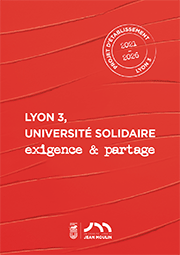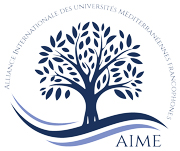AccueilRechercheProgrammes et productions scientifiquesThèsesThèses soutenuesThèses soutenues - 2006-2021Thèses soutenues - 2016
-
Partager cette page
- Recherche,
SALINAS ROJAS Andrea
Dynamiques territoriales dans la gestion des ressources forestières des espaces protégés du Mexique. Le cas du Nevado de Toluca.
Publié le 29 novembre 2016 – Mis à jour le 20 décembre 2018
Thèse en Géographie-Aménagement soutenue le 25 octobre 2016.
Cette recherche porte sur le Nevado de Toluca (Mexique), espace protégé où l’objectif de conservation des ressources forestières, tout en étant difficilement atteint, met en question les conditions d’existence des populations rurales. On étudie les dynamiques territoriales qui découlent de ces tensions. La question porte donc essentiellement sur la confrontation entre la conservation forestière telle qu’elle est portée par les autorités publiques d’une part, et d’autre part, les besoins vitaux des populations agricoles affectées par les politiques suivies. L’hypothèse principale est que les politiques de conservation forestière n’atteignent pas les objectifs de gestion fixés parce qu’il n’y a pas une vision globale dépassant les approches sectorielles des institutions en présence, et surtout parce que l’avis des paysans n’est pas assez pris en compte faute d’une connaissance approfondie des sociétés rurales. Pour rétablir cette connaissance, la méthode de recherche a consisté principalement, outre la documentation mobilisée, en de nombreux entretiens avec les habitants de plusieurs localités du Nevado, avec différents acteurs institutionnels et avec des experts forestiers qui participent à la conservation de cet espace protégé. ? l’aide du logiciel TXM, ces entretiens ont fait l’objet d’une analyse quali-quantitative de type ? textométrique ?. Parmi les principaux résultats obtenus, on retiendra notamment le fait que les populations locales ont des représentations sociales très contrastées de leur milieu tout en ayant une pleine conscience des enjeux écologiques. Elles ressentent les restrictions d’usage, en particulier du bois de feu, comme une injustice sociale. Cependant, des configurations socio-spatiales et des dynamiques territoriales originales existent, et dépendent du contexte géographique, en particulier des phénomènes de proximité spatiale et sociale. La cohésion sociale des groupes importe et sera d’autant plus forte que ses membres partagent les mêmes valeurs culturelles, y compris religieuses. On constate également que l’éloignement de la ville produit paradoxalement des dynamiques endogènes d’organisation qui peuvent aussi constituer une base pour une politique de protection intégrée en dépit des contraintes de vie au quotidien. Au total, cette thèse propose une réflexion sur l’arbitrage à faire entre la conservation forestière et les impacts socio-économiques que cela provoque sur les populations rurales les plus démunies et esquisse des pistes de conciliation. Elle invite à penser la justice environnementale comme le fruit de l’innovation sociale.
This research concerns the Nevado de Toluca (Mexico), a protected area where the goal of forest conservation, while being hardly reached, calls into questions the livelihoods of rural populations. Territorial dynamics which ensue from these tensions are examined. The question concerns essentially the confrontation between the forest preservation such as it is carried by the public authorities on one hand, and on the other hand, the vital needs for the agricultural populations affected by the followed policies. The main hypothesis is that policies of forest preservation do not reach the expected results because there is no global vision exceeding the sectorial approaches of institutions in presence, and especially because the opinion of the farmers is not enough taken into account, due to lack of a thorough knowledge of the rural societies. To restore this knowledge, the research method consisted mainly, besides the mobilized documentation, of numerous interviews with the inhabitants of several localities of Nevado, with the various institutional actors and with the forest experts who participate in the preservation of this protected space. Using the TXM software, these interviews were analysed employing a quali-quantitative analysis on the “textometric” type. Among the main obtained results, we shall hold in particular the fact that the local populations have very contrasted social representations of their environment while having a full consciousness of the ecological challenges. They feel the limitations of use, in particular some wood of fire, as a social injustice. However, socio-spatial configurations and original territorial dynamics exist, and depend on the geographical context, in particular the phenomena of spatial and social proximity. The social cohesion of the groups is important and will be all the stronger as his members share the same cultural values, including religious ones. We also notice that the distance of the city produces paradoxically endogenous dynamics of organization which may also be a basis for an integrated protection policy in spite of the constraints of everyday life. All in all, this thesis suggests a reflection around arbitration between the forest preservation and the socioeconomic impacts on the rural poorest population groups. She invites to think of the justice environmental as of the fruit of the social innovation.
This research concerns the Nevado de Toluca (Mexico), a protected area where the goal of forest conservation, while being hardly reached, calls into questions the livelihoods of rural populations. Territorial dynamics which ensue from these tensions are examined. The question concerns essentially the confrontation between the forest preservation such as it is carried by the public authorities on one hand, and on the other hand, the vital needs for the agricultural populations affected by the followed policies. The main hypothesis is that policies of forest preservation do not reach the expected results because there is no global vision exceeding the sectorial approaches of institutions in presence, and especially because the opinion of the farmers is not enough taken into account, due to lack of a thorough knowledge of the rural societies. To restore this knowledge, the research method consisted mainly, besides the mobilized documentation, of numerous interviews with the inhabitants of several localities of Nevado, with the various institutional actors and with the forest experts who participate in the preservation of this protected space. Using the TXM software, these interviews were analysed employing a quali-quantitative analysis on the “textometric” type. Among the main obtained results, we shall hold in particular the fact that the local populations have very contrasted social representations of their environment while having a full consciousness of the ecological challenges. They feel the limitations of use, in particular some wood of fire, as a social injustice. However, socio-spatial configurations and original territorial dynamics exist, and depend on the geographical context, in particular the phenomena of spatial and social proximity. The social cohesion of the groups is important and will be all the stronger as his members share the same cultural values, including religious ones. We also notice that the distance of the city produces paradoxically endogenous dynamics of organization which may also be a basis for an integrated protection policy in spite of the constraints of everyday life. All in all, this thesis suggests a reflection around arbitration between the forest preservation and the socioeconomic impacts on the rural poorest population groups. She invites to think of the justice environmental as of the fruit of the social innovation.
Mots-Clés : espace protégé, conservation forestière, proximité socio-spatiale, tensions et conflits sociaux, développement local, dynamiques territoriales.
Keywords : protected area, forest conservation, socio-spatial proximity, social tensions and conflicts, local development, territorial dynamics.
Directeur de thèse : Michel MIETTON
Membres du jury :
- Etienne COSSART Professeur des universités Université Jean Moulin Lyon 3 Président
- Samuel DEPRAZ Ma?tre de conférences Université Jean Moulin Lyon 3 Examinateur
- Sylvain GUYOT Professeur des universités Université Bordeaux-Montaigne Pré-rapporteur
- Jacques IMBERNON Directeur de recherche CIRAD Montpellier Pré-rapporteur
- Sergio FRANCO MAASS Investigator Universidad Autónoma del Estado de México Examinateur
- Michel MIETTON Professeur des universités, émérite Université Jean Moulin Lyon 3 Directeur de thèse
Président du jury : Etienne COSSART
Equipe d'accueil : UMR 5600 - EVS
Décision : AdmiseKeywords : protected area, forest conservation, socio-spatial proximity, social tensions and conflicts, local development, territorial dynamics.
Directeur de thèse : Michel MIETTON
Membres du jury :
- Etienne COSSART Professeur des universités Université Jean Moulin Lyon 3 Président
- Samuel DEPRAZ Ma?tre de conférences Université Jean Moulin Lyon 3 Examinateur
- Sylvain GUYOT Professeur des universités Université Bordeaux-Montaigne Pré-rapporteur
- Jacques IMBERNON Directeur de recherche CIRAD Montpellier Pré-rapporteur
- Sergio FRANCO MAASS Investigator Universidad Autónoma del Estado de México Examinateur
- Michel MIETTON Professeur des universités, émérite Université Jean Moulin Lyon 3 Directeur de thèse
Président du jury : Etienne COSSART
Equipe d'accueil : UMR 5600 - EVS
Documentation
Mise à jour : 20 décembre 2018







